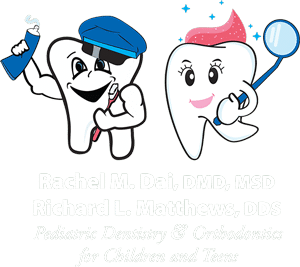What Does Legacy Orthodontics Do?
What Does Legacy Orthodontics Do?
Blog Article
Indicators on Legacy Orthodontics You Need To Know
Table of ContentsThe Facts About Legacy Orthodontics Uncovered3 Easy Facts About Legacy Orthodontics ShownGetting The Legacy Orthodontics To WorkLittle Known Questions About Legacy Orthodontics.Unknown Facts About Legacy Orthodontics
In enhancement, we use flexible therapy routines, flexible settlement alternatives and an enjoyable, delightful experience.An orthodontist is a dental practitioner trained to identify, avoid, and deal with teeth and jaw abnormalities. Orthodontists function with people of all ages, from children to grownups.
Malocclusion, or misaligned teeth, can cause dental problems, including dental cavity, gum illness, and challenging or unpleasant chewing. Yet not everybody is born with straight teeth. If you have a bad bite or large spaces in between your teeth, you might want to seek advice from a dentist focusing on orthodontic treatment.
Some Of Legacy Orthodontics
( Photo Credit Scores: DigitalVision/Getty Images) Orthodontists use taken care of and removable dental gadgets, like braces, retainers, and bands, to transform the setting of teeth in your mouth. Orthodontic treatment is for oral irregularities, consisting of: Misaligned teethBite issues, like an overbite or an underbiteCrowded teeth or teeth that are too much apartJaw misalignmentThe goal of orthodontic treatment is to enhance your bite.
While you might believe of orthodontists as primarily for children or teenagers who need dental braces, they can remedy oral problems at any kind of age. Orthodontists go to university, oral institution, and orthodontic school.
All orthodontists are dental experts, but not all dental practitioners are orthodontists. Orthodontic residency programs offer intensive, concentrated direction for dental experts. They concentrate on 2 areas: How to appropriately and safely relocate teeth Just how to properly lead advancement in the teeth, jaw, and faceOnce an orthodontist has finished training, they have the alternative to come to be board licensed.
Facts About Legacy Orthodontics Uncovered
Imbalance, or malocclusion, is one of the most usual reason individuals see an orthodontist. It is hereditary and is the result of dimension differences between the top and reduced jaw or in between the jaw and teeth. Malocclusion results in tooth overcrowding, an irregular jaw, or irregular bite patterns. Malocclusion is typically treated with: Your orthodontist affixes steel, ceramic, or plastic square bonds to your teeth.
If you have just small malocclusion, you might have the ability to utilize clear dental braces, called aligners, as opposed to conventional dental braces (https://pxhere.com/en/photographer/4385580). Some individuals need a headgear to help move teeth into line with stress from outside the mouth. After dental braces or aligners, you'll need to put on a retainer. A retainer is a customized device that maintains your teeth in position.
They're frequently used on kids. They can produce extra room in the mouth without needing to draw teeth. If you have a severe underbite or overbite, you might need orthognathic surgery (additionally called orthodontic surgical procedure) to lengthen or shorten your jaw. Orthodontists utilize cables, medical screws, or plates to sustain your jaw bone.
You might need to see an orthodontist if you have: Crowding or not enough room for all of your teethOverbite, when your top teeth come over your base teethUnderbite, when your bottom teeth are as well far forwardSpacing or issues with gapsCrossbite, which is when your top teeth fit behind your base teeth when your mouth is closedOpen bite or a vertical space between your front bottom and top teethMisplaced midline, when the facility of your base and upper teeth don't line up Remedying a dental malocclusion can: Make biting, chewing, and talking easierImprove the symmetry of our face and your general appearanceEase discomfort from temporomandibular joint disordersDifferent your teeth and make them simpler to clean up, aiding stop dental cavity or tooth cavities It's commonly a dental practitioner who initially notices misaligned teeth throughout a regular exam.
The 10-Second Trick For Legacy Orthodontics

During your very first orthodontic consultation, you'll likely have: A dental examPhotos taken of your face and smileDental X-raysPanoramic (360 level) X-rays of your face and headImpressions to develop mold and mildews of your teethThese tests will help your orthodontist recognize how to wage your treatment. leesburg orthodontist. An orthodontist is a dental expert who's had training to treat your try this website teeth and jaw
An orthodontist is focused on your bite, so something like a broken tooth would be taken care of by a dental expert. Orthodontists are concentrated on your bite, or the way your teeth fit together, and the straightness of your teeth.
Ever before asked yourself exactly how celebs constantly seem to have completely aligned teeth? Orthodontists are oral specialists who concentrate on dealing with abnormalities in the teeth and jaws.
How Legacy Orthodontics can Save You Time, Stress, and Money.

, orthodontists have a varied toolkit at their disposal. These tried-and-true braces make use of a system of brackets adhered to the teeth and attached by cables.
These removable trays are custom-made to progressively move the teeth's position. In situations of narrow jaws, palatal expanders can be made use of to produce area for appropriate tooth alignment.
Report this page